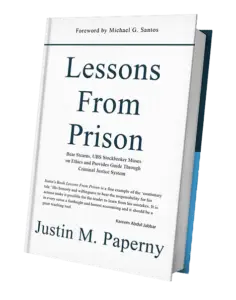Last week, I got a call from an upset woman whose husband is preparing for federal prison. She was angry because, in our webinar, I said, “We’re not your parents. We’re not going to tell you how to serve your sentence.” Her concern? That some people in prison waste time on distractions like iPhones or pickleball instead of building something meaningful.
She’s not wrong to worry. Time in prison can be wasted or used well. The Bureau of Prisons (BOP), through its June 2025 memo, has made clear that what matters most is documented progress—not entertainment, not surface activity. Specifically, “Documentation should support the individual’s release plan.”
A release plan isn’t about staying busy. It’s about showing clear, written evidence of growth: education, skill-building, financial planning, or service work. If someone wants to play pickleball, fine—but without a release plan showing measurable progress, it won’t influence referrals for early placement or leniency.
The Danger of Delaying Effort
Some people come to prison with the mindset, “I’ll figure it out later.” They stall, criticize others who are trying, and miss the window to cooperate, prepare, or document anything useful. But those who take responsibility early—before sentencing and once in prison—create a clear record of what they’ve done to prepare for release.
Acting early affects what happens next. Prosecutors, probation officers, case managers, and judges look for consistent, documented effort over time, not last-minute activity. Without it, no one will argue for reduced custody or early placement on your behalf.
Michael Santos Modeled the Standard
Michael Santos spent 26 years in federal prison and set the standard for how to document preparation. Through his Release Plan Workbook, which he donated to thousands inside, he helped define what the BOP now asks for: personal narratives that show work completed, progress made, and specific goals achieved.
This approach is not theory—it is now reflected in BOP policy. A release plan is an asset, not a passive form, and Santos’s own public profile on PrisonProfessorsTalent.com shows exactly how this looks in practice.
Publish Progress Where It Can Be Seen
PrisonProfessorsTalent.com offers a space where incarcerated individuals can publish their release plans, log progress, and create a verifiable record. This allows stakeholders to see who has been building toward reentry—and who has been stalling. Whether someone reads, writes, studies, or builds a project, it needs to be documented, updated, and made visible.
Success will look different for each person. But one thing is consistent: without documentation, none of it counts toward early release or favorable referrals. Identify what you need to work on, take it seriously, and build a written, dated record that proves you’re using your prison sentence time to prepare.
Join our weekly webinar every Tuesday at 11 a.m. PST / 2 p.m. EST or schedule a personal call to get clear guidance on writing and sharing a release plan that details your progress, completed work, and steps taken to prepare for release.
Justin Paperny



